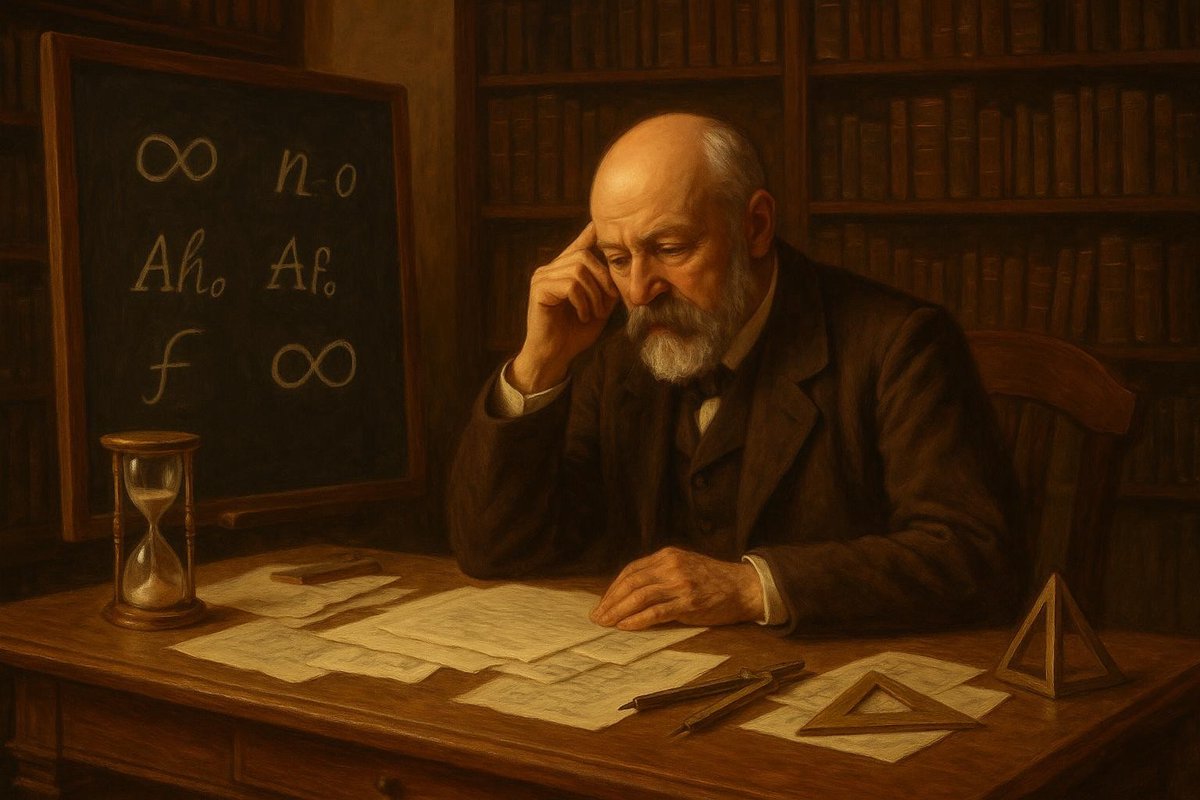
Unpacking the Mystery: Can Infinity Have Different Sizes?
Can infinity actually come in different sizes? It’s a question that might seem like a paradox. Infinity, by its very nature, feels boundless and uniform. Yet, Georg Cantor, a German mathematician from the late 19th century, fearlessly explored this seemingly simple question, leaving the mathematical world forever changed.
Before Cantor, numbers and their infinite sequences seemed like a straightforward road leading to the same endless horizon. But Cantor’s revolutionary work with set theory showed that not all infinities are equal.
- He introduced the concept of comparing different infinite sets, like the set of all whole numbers and the set of all real numbers.
- Through his work, he demonstrated that some infinities are indeed larger than others.
- His famous diagonal argument revealed that the real numbers cannot be counted, unlike the whole numbers.
Cantor’s insights showed that infinity is not a monolithic concept but a rich tapestry woven with different threads, each stretching beyond our imagination.
Surprising Facts That Shattered Conventional Beliefs
As Cantor unveiled his theories, the world of mathematics was turned on its head. Here are a few surprising elements that were hard to digest at first:
- His notion of ‘cardinality’ allowed mathematicians to compare the ‘sizes’ of infinite sets.
- Many found it counterintuitive that the set of even numbers is just as large as the set of all integers, yet both are smaller than the set of real numbers.
Interestingly, this discovery was not just a mathematical quirk but a philosophical revelation. Before Cantor, infinity was often seen as a philosophical or theological concept, not one that could be dissected and analyzed with mathematical precision.
The backlash was fierce. Many contemporaries, including famous mathematicians like Henri Poincaré, were skeptical, calling Cantor’s ideas ‘a disease.’ Yet, Cantor’s theories were undeniably elegant, and as time progressed, they gained acceptance, pushing the boundaries of what people thought possible.
The Science Behind Cantor’s Theories
What made Cantor’s theories so groundbreaking was his methodical approach to what seemed abstract. His work was rooted in set theory, a framework that was still in its infancy during his time.
- He devised ingenious ways to map infinite sets onto one another, comparing their elements’ correspondences.
- The diagonal argument, a masterstroke of logical reasoning, proved that real numbers cannot be mapped to natural numbers without missing elements.
This technique opened new doors in how infinity could be perceived, leading to the Cantor theorem, which states that for any set, the set of all its subsets (the power set) has a strictly greater cardinality.
Such ideas went beyond numbers, influencing measure theory, probability, and even computer science. As Cantor’s work matured, it wasn’t just seen as groundbreaking but as a new lens through which to view the universe.
Why Cantor’s Conceptions Matter to Us
What does Cantor’s exploration of different infinities mean for our daily lives? While most of us may not ponder the nature of infinity regularly, Cantor’s work touches many areas of science and technology.
- Foundational ideas in modern computer science and cryptography are deeply rooted in set theory.
- The concept of infinity is crucial in calculus, which underpins physics, engineering, and economics.
By understanding that infinities can differ, we open our minds to the potential of endless possibilities, from the infinite universe to the micro-level wonders of quantum mechanics.
The philosophical implications are just as profound, encouraging us to think beyond the finite and embrace the boundless horizons of knowledge and existence.
In conclusion, Georg Cantor’s exploration of infinity not only expanded the boundaries of mathematics but offered a new paradigm for thinking about the infinite. His work reminds us that even the most abstract concepts can have profound implications, both scientifically and philosophically.
Fuel Someone Else’s Curiosity
Can’t get enough of infinity? Share this article with friends or fellow math enthusiasts and spark a conversation. Who knows, you might inspire the next great mathematical thinker!

Leave a Reply